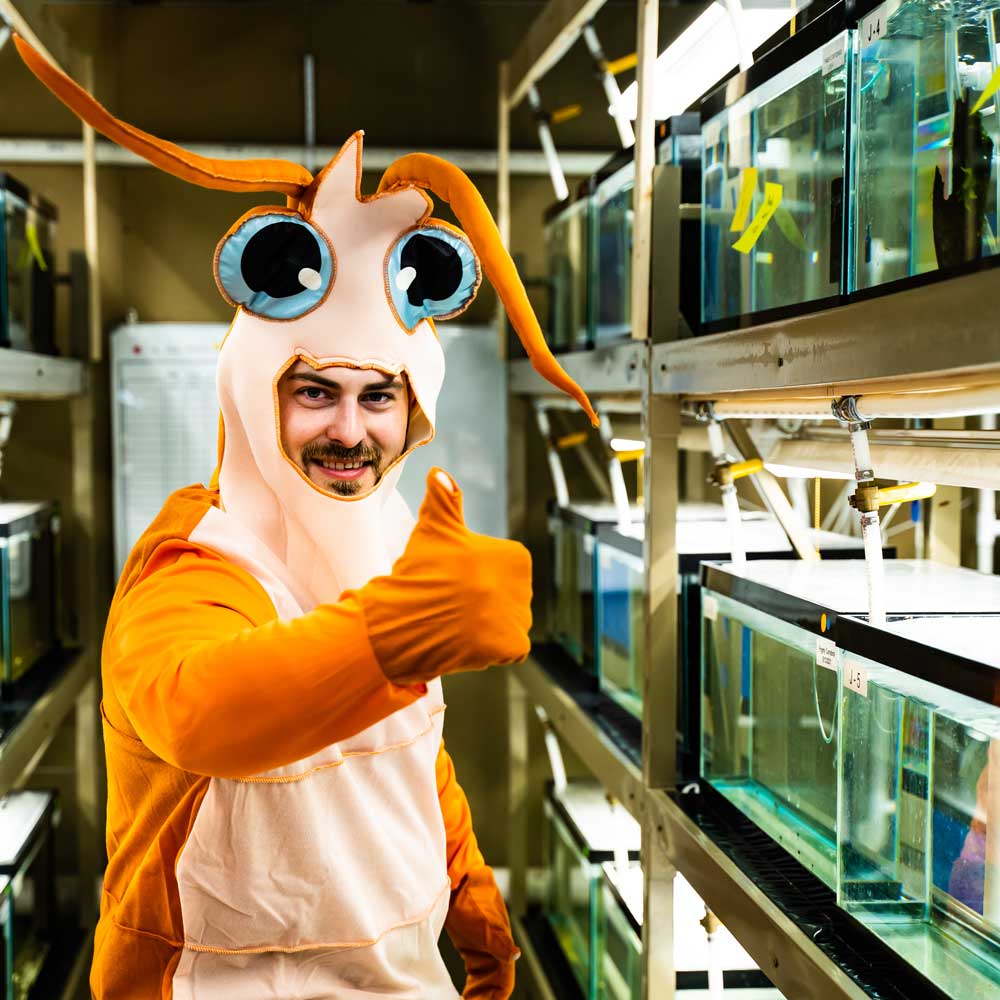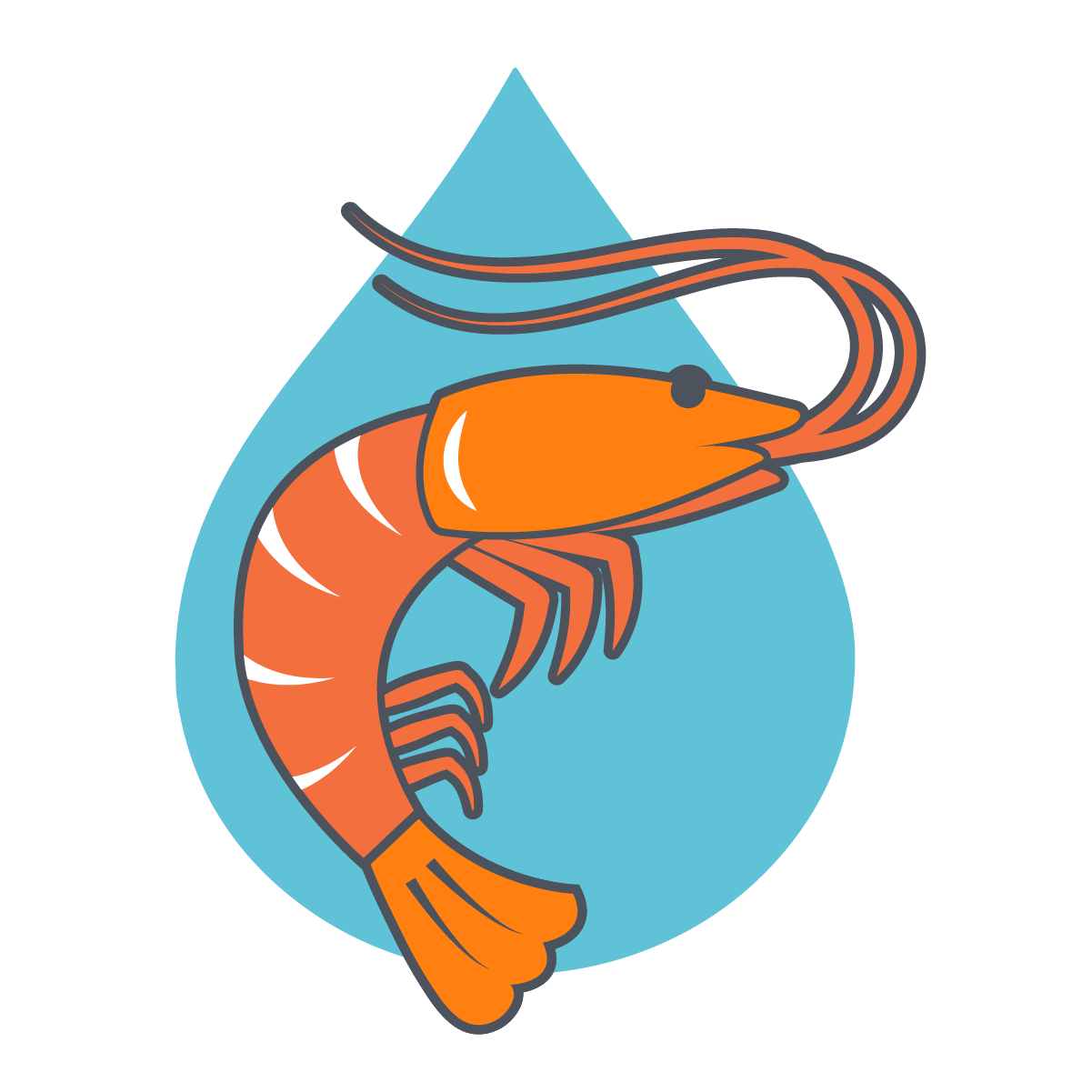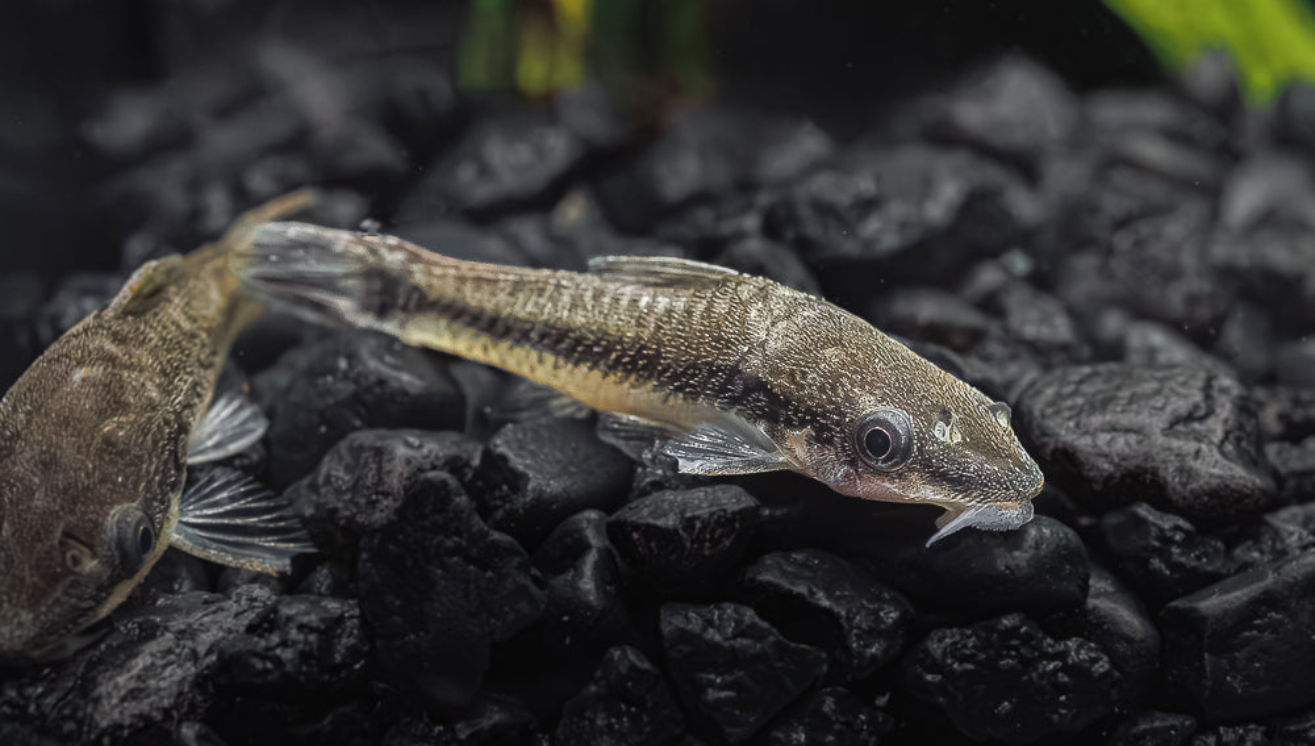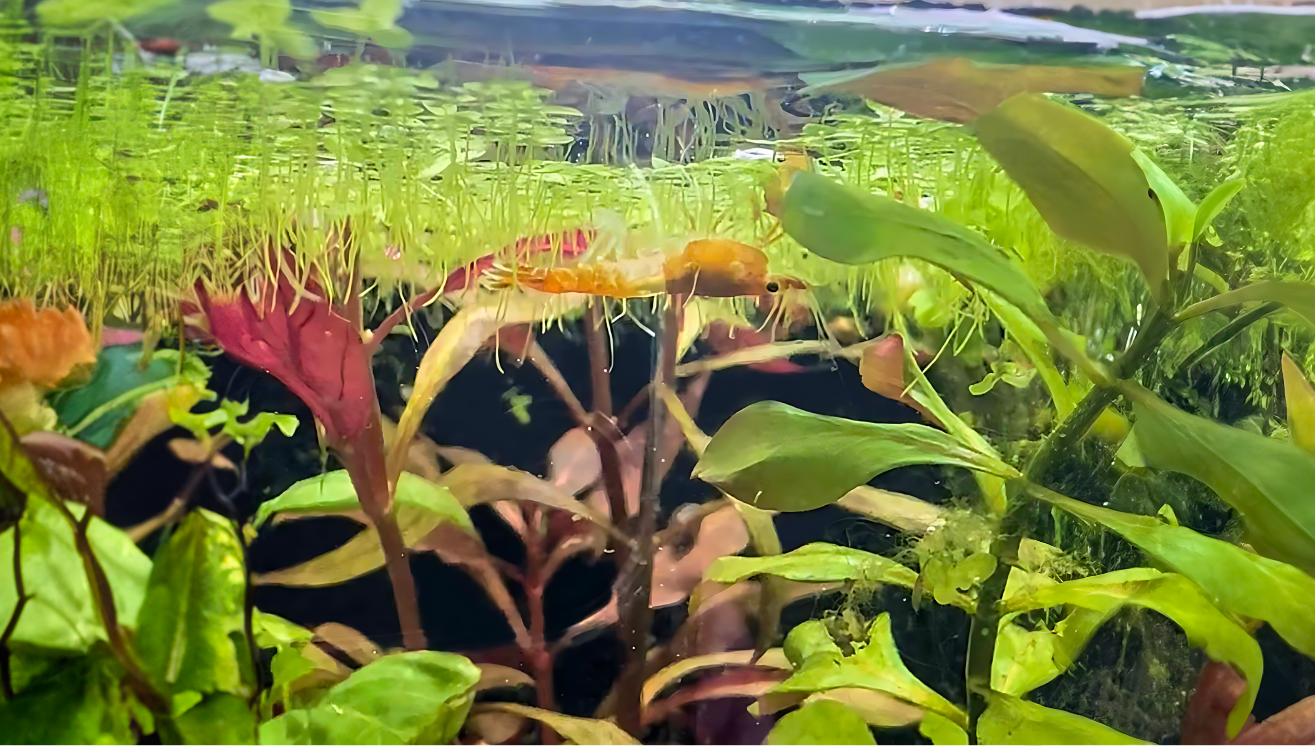Your Cart is Empty
According to the American Pet Products Association (APPA), almost 70% of American households own at least one pet.
As you can guess, dogs are the most popular domestic pet, closely followed by cats. But pet ownership isn't always smooth sailing; it's a significant investment and long-term commitment.
The good news is there's another, more affordable and less time-consuming pet to own. Pet shrimp are gaining immense popularity across the globe. They're easy to care for and a great way to teach kids about ecosystems.
Looking to add these overlooked critters to your family?
Learn everything you need to know about taking care of your underwater pets in this guide.
About Shrimp
Many people opt for fish over shrimp, but these tiny creatures are fascinating. Shrimp are shellfish belonging to the crustacean family. They typically live in marine waters and are often caught for food and, more recently, kept as pets.
Shrimp range in size from a fraction of an inch to more than 8 inches. They have slender bodies covered by a hard casing, or exoskeleton, which shields them from predators and protects their vital organs.
As shrimp grow, they shed their casing in a process called molting, leaving them temporarily vulnerable.
Shrimp play a vital role in ecosystems as a food source for larger animals and as cleaners that eliminate dead matter and parasites.
As pets, shrimp eat algae without harming plants, reducing the need for filtration and algae control.
Shrimp can survive in various environments and constantly adapt to suit harsh conditions. Most species live in saltwater environments such as the Gulf of Mexico and the South Atlantic Ocean. Freshwater shrimp live in landlocked areas and tend to be larger and non-edible, making them great pets.
Benefits of Freshwater Shrimp
While you can keep saltwater shrimp as pets, freshwater shrimp are more robust and less expensive. They're more forgiving of water chemistry fluctuations, whereas saltwater shrimp are susceptible to salinity disruptions.
Freshwater shrimp can live between two to three years, and some species can reach up to eight years. They come in various colors—red, green, yellow, blue, black, and brown.
Why Keep Shrimp as Pets?
- Great entertainment
- Colorful and unusual addition
- Breeds for all budgets
- Easy to maintain
- Voracious eaters
- Space-efficient
- Some are nocturnal
- Keep tanks clean
- Easy to breed
- Coexist with many fish types
Most freshwater shrimp are easy to keep and can improve water quality while adding excitement to your aquarium.
Freshwater Shrimp Species
With nearly 600 varieties of freshwater shrimp, some are better suited for aquariums. The three most commonly kept groups are:
- Caridina
- Neocaridina
- Palaemonetes
Less popular types include Atyopsis, Atya, and Macrobrachium.
Neocaridina vs. Caridina
Neocaridina and Caridina look similar but have different care needs. Neocaridina are hardy beginner shrimp that tolerate varied conditions. Caridina require softer water, which is harder to maintain.
The Neocaridina genus includes dwarf species like Red Cherry Shrimp and Snowball Shrimp—easy for first-timers. The Caridina genus includes Sulawesi Shrimp and Blue Tiger Shrimp—better for experienced keepers.
Popular Freshwater Aquarium Shrimp
Amano Shrimp (Caridina multidentata)

Amano Shrimp, also known as Algae Eating Shrimp or Yamato Shrimp, are resilient and active. They're easy to care for and have a big appetite for algae. Avoid housing them with larger species like Cichlids or Gourami; pair them with Cherry Shrimp, Bristlenose Pleco, or Neon Tetras.
- Origin: Japan & Taiwan
- Difficulty: Easy
- Temperament: Peaceful
- Diet: Omnivore
- Tank Size: ≥ 5 gal
- Lifespan: 3–5 years
Red Cherry Shrimp (Neocaridina davidi)

Red Cherry Shrimp are tiny, ornamental freshwater shrimp—the most popular in the hobby. They reach about 1.6 inches long and are known for their easy care and algae-eating habits.
- Origin: Taiwan
- Difficulty: Easy
- Temperament: Peaceful
- Diet: Omnivore
- Tank Size: ≥ 5 gal
- Lifespan: 1–2 years
Crystal Red Shrimp (Caridina cantonensis)

Crystal Red Shrimp are popular for their bright red and white patterns. They’re fragile when it comes to water quality—test often to ensure optimal parameters.
- Origin: Taiwan & Japan
- Difficulty: Moderate
- Temperament: Peaceful
- Diet: Omnivore
- Tank Size: ≥ 10 gal
- Lifespan: 1–2.5 years
Blue Bolt Shrimp (Caridina cf. cantonensis)

Blue Bolt Shrimp are a Taiwan Bee variety with beautiful blue hues. They need precise water parameters similar to Crystal Reds.
- Origin: Southern China
- Difficulty: Moderate–Difficult
- Temperament: Peaceful
- Diet: Omnivore
- Tank Size: ≥ 10 gal
- Lifespan: 1.5–2 years
Chocolate Shrimp (Neocaridina davidi)

Chocolate Shrimp sport a rich brown shell. They tolerate soft or hard water and thrive on algae and biofilm.
- Origin: Eastern China
- Difficulty: Easy
- Temperament: Peaceful
- Diet: Omnivore
- Tank Size: ≥ 5 gal
- Lifespan: 1.5–2.5 years
Singapore Flower Shrimp (Atyopsis moluccensis)

Singapore Flower Shrimp need a ≥ 20 gal tank with plenty of hideouts and decaying plant matter. They’re easy to care for but require brackish water to breed.
- Origin: Asia
- Difficulty: Easy
- Temperament: Peaceful
- Diet: Omnivore
- Tank Size: ≥ 20 gal
- Lifespan: 1–2 years
Feeding Freshwater Shrimp
Freshwater shrimp are omnivores: they eat both animal and plant matter. Their preferred food is biofilm, but as your population grows you'll need to supplement with flakes, pellets, freeze-dried or frozen foods, algae sheets, and wafers.
- Flakes
- Pellets
- Freeze-dried
- Frozen foods
- Algae sheets
- Wafers
At Flip Aquatics, we stock a range of quality shrimp foods, from Shrimp Envy to NorthFin. You can also offer boiled & frozen veggies (spinach, kale, zucchini, sweet potato) a few times a week.
- Feed 2–3× per week
- Thaw frozen foods before feeding
- Rotate food types
- Avoid cheap, fast-breaking foods
Breeding Freshwater Shrimp
Breeding shrimp can be rewarding (and profitable). Avoid crossbreeding as it often produces weaker offspring. Beginners often start with Red Cherry Shrimp:
- Induce breeding by stabilizing water parameters and offering high-protein foods
- Protect egg-bearing females from predators
- Provide plenty of hiding spots for the young
Common breeding pitfalls:
- Wrong foods
- Unsuitable species
- Incompatible tankmates
- Excessive water changes
- Insufficient hiding spots
- Incorrect temperature or parameters
Live plants help by filtering, removing nitrates, mimicking habitat, providing biofilm, and offering cover.
Shrimp Tankmates
Some great shrimp tankmates include Neon Tetras, Betta (male), freshwater snails, Dwarf Gourami, Bristlenose Plecos, and Cory Catfish. Other shrimp (Amano, Ghost) can cohabit, but watch for crossbreeding.
Shrimp Tank Setup

Key equipment for a nano shrimp tank:
- 3–10 gal aquarium
- Cover & screen
- Filter (sponge is shrimp-safe)
- Heater & thermometer
- Substrate (gravel, sand, inert soil)
- Test kit (NH₃, NO₂⁻, NO₃⁻, pH, GH, KH, TDS)
- Shrimp food
- Vacuum, net, scrubber, bucket
Tank
Opt for ≥ 20 gal (max 40 gal) to minimize parameter swings and support breeding.
Test Kit
Monitor ammonia, nitrite, nitrate, pH, GH, and KH. Test ammonia & nitrite daily when new; then focus on nitrate.
Filter
Choose shrimp-safe filters: Matten Filter, canister, HOB (with sponge guard), internal, or sponge filter.
Substrate
Inert substrates (gravel, sand, baked clay) are easiest—stable and won’t alter water chemistry.
Pet Shrimp: The Unique Pet Experience
Pet shrimp are a fun, low-maintenance way to introduce kids (and adults) to aquatic ecosystems. They deserve the same care as any pet—provide a stable, suitable environment to thrive.
At Flip Aquatics, we’re passionate about shrimp. Whether you’re a beginner or an expert, we’ve got shrimp, nano fish, plants, and snails to meet your aquarium needs.
Browse our full range of shrimp and start your underwater adventure today!









